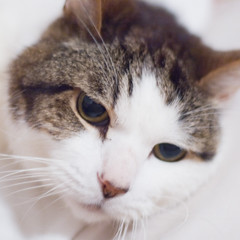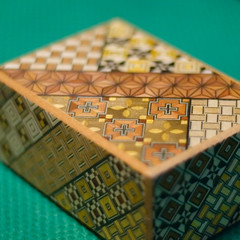Several months ago I tripped over a little language called Lua. It seemed like a novel idea, but its absence of curly braces and lack of ++, += and similar operators felt uncomfortable after years of C, and I didn't look very close. Then I started to notice it hiding in the most unlikely places, culminating in Adobe Photoshop Lightroom where the development team claims that over 40% of LR is implemented in the Lua programming language. It seemed like it was worth a second look (along with SQLite, the database engine behind LR, but that is another subject altogether) so I started to play with it.
In a word, "wow".
Lua is a scripting and extension language designed to be easily embedded in a host application. It has a simple C language API that permits the application to easily call functions and manipulate lua values. It also makes it easy to call C functions from lua code, and to add those functions by dynamic linkage to a running program from shared libraries (DLLs on Windows).
Lua was invented by a resourceful group at a Brazilian college to serve needs they saw for configuring and extending applications. Since it was a successor to an earlier language called Sol (Portuguese for Sun), it got named Lua (Portuguese for Moon).
As I see it, several properties of the language have contributed to its success. First, the Lua team has chosen to use the MIT license which is an open source license that also permits effectively unrestricted use in commercial products. This has made it legally possible for commercial developers to consider using the language in their products; and probably as a result of this leniency a significant number of commercial product teams are regular contributors to the lua programming community.
Second, Lua is implemented in standard C, sticking to the subset of the C language that has identical semantics if compiled as C++. The Lua language itself is compiled for a virtual machine and can be saved as (non-portable) bytecode before execution in the VM. Since it is possible (and encouraged) to write lua programs that don't need to compile new code at runtime, it is easy to separate the compiler from the interpreter and distribute only pre-compiled byte code files. Because of this, it is amazingly portable. It is found inside a shocking number of game consoles, PC games, more general products like LR, and even a wide array of embedded systems. In an embedded system, it is most likely to have the compiler stripped off to reduce the amount of code and data space required in a limited environment.
Third, and certainly not last, lua is a very expressive language. The designers have emphasized mechanisms over policies, and as a result although lua is not an object oriented language, you can use its core metatable features to implement object oriented features such as single and multiple inheritance, private data, and object and class methods. Functions are a first-class value, and hence can be stored in variables, passed as arguments to functions, and even be generated (as closures) as the return values from functions.
The core language provides numeric and string data types, along with nil, tables, functions and threads, and two kinds of data wrappers for opaque data belonging to the C side of the fence. The language provides an incremental garbage collector that can be tuned to avoid long stalls for collection.
The C API makes it easy to provide wrappers for third party libraries and system calls that can be loaded on demand. By putting the most demanding inner loops and algorithms into C libraries and leaving the overall program structure to lua, powerful utilities can be built quickly.
My first project in Lua was a serial protocol debugger for a new feature for one of Cheshire's projects. In about 1500 lines of lua and another 1500 lines of C (and only a couple of days work) I was able to build an interactive serial port debugging tool that could log traffic, load and save the logs, send arbitrary data to the device, send random data to the device, and play saved files at the device at an adjustable rate. Building something like that from scratch with C++ and MFC would have taken a lot longer and may never have been as feature rich.
Since then I have built a protocol analyzer for an unrelated Cheshire project with a much more complex packet based protocol, and even built a live status monitor with meters and displays. I have created my own generalized C language host application so that I can deliver an installable windows application as an executable, a few DLLs, and a nest of lua scripts. When my host engine is ready for public view, I will be releasing a version of it back to the Lua programming community as my thanks.
Learn more about Lua at www.lua.org where you will find links to the language itself, its reference manual, books published by its authors, and of course links to the most prominent bits of the lua community: the lua wiki and luaforge.
The tools I've built for Windows would not have been possible without some of the other work contributed by people associated with Lua's creation: IUP for portable user interface design, CD for 2-D graphics, and IM for image processing.


 Annette and Dr. Sylvia Domotor. Dr. Domotor has been his first choice of veterinarian for his entire life, and she was with him when he died. We named him Rorschach because the tabby patch on his body was shaped like a perfect ink blot. He quickly became Rory for day-to-day usage, at least partly out of an urge not to have to spell Rorschach all the time.
Annette and Dr. Sylvia Domotor. Dr. Domotor has been his first choice of veterinarian for his entire life, and she was with him when he died. We named him Rorschach because the tabby patch on his body was shaped like a perfect ink blot. He quickly became Rory for day-to-day usage, at least partly out of an urge not to have to spell Rorschach all the time. As a young cat in our condo, he amused us by following us everywhere, sitting on my shoulder, and sleeping curled up tightly in my armpit. That first spring he was too small to climb the stairs easily, but stubbornly managed them one step at a time anyway.
As a young cat in our condo, he amused us by following us everywhere, sitting on my shoulder, and sleeping curled up tightly in my armpit. That first spring he was too small to climb the stairs easily, but stubbornly managed them one step at a time anyway. When we moved the following winter to our current house, naturally he came along. We weren't too worried about the relocation because he had never been allowed to be outside unsupervised. The move itself was uneventful, and with one minor exception he immediately took over the new, larger, space.
When we moved the following winter to our current house, naturally he came along. We weren't too worried about the relocation because he had never been allowed to be outside unsupervised. The move itself was uneventful, and with one minor exception he immediately took over the new, larger, space.
 Once we were all well established in the house, Emily wandered onto our doorstep. When she and Rory touched noses through the screen door, we decided that it might be safe to capture her and add her to the family. After she got a quick visit to Dr. Domotor, we solved the often thorny problem of introducing the second cat to the house by leaving on vacation for two weeks. When we returned, neither cat was speaking to us, but they were fast friends and remained so to the end.
Once we were all well established in the house, Emily wandered onto our doorstep. When she and Rory touched noses through the screen door, we decided that it might be safe to capture her and add her to the family. After she got a quick visit to Dr. Domotor, we solved the often thorny problem of introducing the second cat to the house by leaving on vacation for two weeks. When we returned, neither cat was speaking to us, but they were fast friends and remained so to the end.  For his last weeks at home, Emily was helping to clean Rory up after syringe feedings, and generally grooming him in his last few days.
For his last weeks at home, Emily was helping to clean Rory up after syringe feedings, and generally grooming him in his last few days. Rory took the addition of a third in stride, and in time they too became fast companions.
Rory took the addition of a third in stride, and in time they too became fast companions. 






